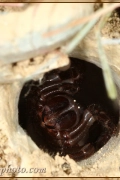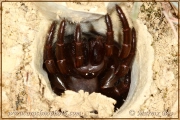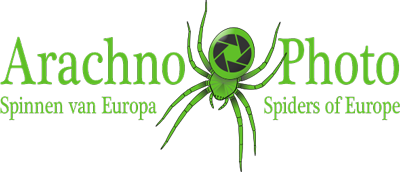The Ctenizidae family is one of the six Bird-Eating Spider families (Mygalomorphae) in Europe (the species in Europe don’t actually eat birds however). The spiders are stocky with short stout legs. They have vertical moving chelicerae with a so-called rastellum that they use to dig their living tubes in earthen walls. These tubes are lined with silk and sealed on the outside with a fairly thick, round door covered with earth and silk. Often there are several tubes in the area, but because the entrance is well camouflaged in the wall they are easily overlooked. The door is attached to the tube by a ‘hinge’. The spider lies in wait just behind the entrance, with its frontal legs between this door, so that it is not completely closed. This way the spider can detect a passing prey and rapidly pull it inward. When disturbed it pulls its legs back, causing the door to close completely. In Europe, eight species.

Genus Cyrtocarenum
Of the genus Cyrtocarenum only two species can be found worldwide. Both species occur in Europe. The spiders are strongly built and very similar to the other European genus Cteniza. In contrast with these spiders, they have a very broad eye field and are somewhat lighter in colour.

